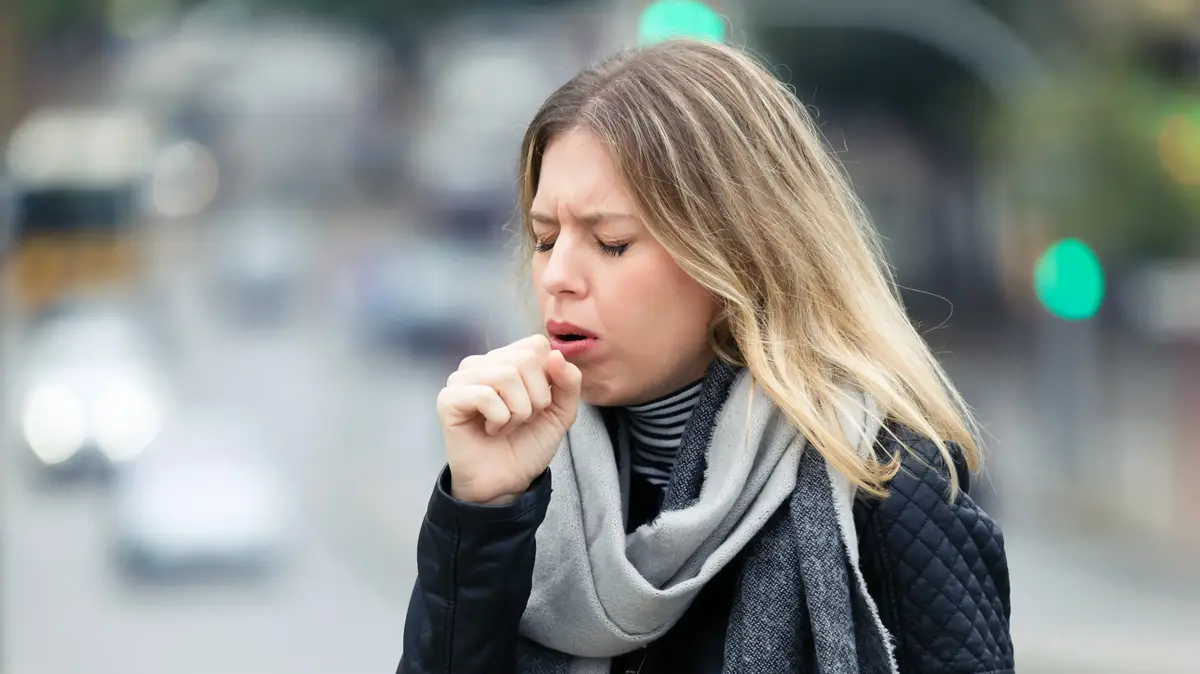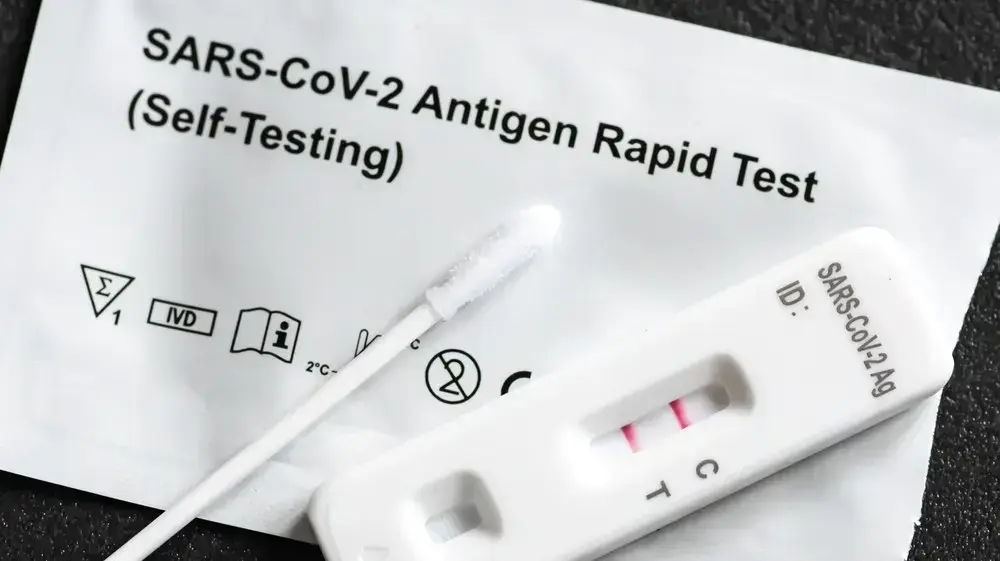While the measures put in place to fight the spread of Covid-19 paralyze France, Le Parisien takes stock of current knowledge on this disease.
What is Covid-19?
Covid-19 is not a coronavirus, nor is it just a virus. It is a viral, contagious, and emerging disease. Viral, because the infectious agent is a virus, SARS-CoV-2, contagious, because the virus is transmitted from humans to humans, and emerging, because we did not know it until then. The severe form of this disease is pneumonia, because the organs infected with the virus are the pulmonary alveoli, where the exchanges take place between the inhaled air and the blood.
What is SARS-CoV-2?
It is a virus, that is to say an infectious agent which has the distinction of needing a host, a cell, to develop and replicate (unlike a bacteria which needs nothing ). This parasite is 125 nanometers in diameter and replicates very well in humans, since we find several tens of millions of copies in one milliliter of sputum. It is of the coronavirus family, and more precisely of those triggering acute respiratory syndromes, like its "big brother", responsible for the deadly SARS epidemic in China in the early 2000s.
What is a coronavirus?
Coronaviruses are a family of viruses which have the particularity of having protuberances giving them a crowned appearance, hence their name. Their preferred hosts are often birds or bats, but they can mutate, recombine, and change hosts ... Until they contaminate humans. Before the current pandemic, that of MERS in 2012 and that of SARS ten years earlier were already due to mutations in the coronavirus.
What is the origin of SARS-Cov-2
The virus first appeared in December in a market in the Chinese city of Wuhan, where wild animals were intended for human consumption.
According to the most likely thesis, men were contaminated after eating pangolin, a small mammal prized in Asia but also in Africa, itself probably infected with bats.
Newsletter - The essentials of the news
Every morning, the news seen by Le ParisienI'm registering
Your email address is collected by Le Parisien to allow you to receive our news and commercial offers. Find out more
How did he get out of China?
The virus is transmitted from human to human and it is therefore through human displacement that the virus left China. In two months, it gradually spread to nearly 200 countries or territories. France was the first European to have sick people on its soil on January 24.
What is its level of contagion?
The germ is highly contagious. To guard against contamination, the health authorities recommend limiting travel as much as possible, avoiding close contact and washing your hands several times a day, for at least twenty seconds.
Many countries, including China, Italy and France have imposed confinement on their populations to limit human contact to a minimum.
What are its modes of transmission?
The coronavirus is transmitted near sick people through the projection of droplets in the air, within a radius of one meter, when one of them coughs or sneezes. You can also get it if you shake the hand of an infected person, hence the importance of washing your hands very regularly.
As the government summarizes on its site, "close contact with a sick person is necessary to transmit the disease".
Can it resist on surfaces?
According to several studies, the virus could last several days or several hours on surfaces such as paper, steel, or plastic. However, "just because a little virus survives doesn't mean it's enough to infect someone who touches that surface." In fact, after a few hours, the vast majority of the virus dies and is probably no longer contagious, ”reassures the government.
Other scientific work also evokes a capacity of resistance in the air for several hours. However, these results have not been scientifically confirmed and should therefore be taken with caution.
What is its incubation period?
The researchers seem to agree on an average incubation period of six days and a maximum of 14 days. However, there may be some exceptionally longer cases. A Chinese septuagenarian from Hubei province is said to have developed symptoms after 27 days of incubation.
What are the symptoms ?
The main symptoms of infection are breathing difficulties, fever above 38 ° C, chills, intense fatigue, muscle pain and headaches. Loss of taste or smell can also occur in some cases.
Who are the profiles who are at risk of catching it?
In absolute terms, everyone is likely to get coronavirus. Initially, the people most closely watched were those who had recently gone to risk areas or who lived in hotbeds of contamination, sometimes called "clusters". Now, in France as in many other countries, as the virus is spreading all over the country, anyone can be affected.
What are the treatments ?
"There is no specific treatment for the disease resulting from a new coronavirus," said the WHO. Only symptoms can be treated. However, anti-inflammatory drugs such as ibuprofen, aspirin or cortisone, suspected of worsening certain cases, should be avoided.
What about chloroquine?
This molecule could make it possible to treat patients very effectively, according to Pr Didier Raoult, director of the hospital-university Mediterranean Infection Institute in Marseille (Bouches-du-Rhône). This infectious disease specialist carried out an experiment on 24 patients affected by Covid-19, and he assures that the results turned out to be "spectacular".
More cautious, health authorities have authorized chloroquine only for severe cases. And the molecule was integrated into a European clinical trial which started Monday March 23 and whose results are expected two or three weeks later.
What profiles are at risk of dying?
People over the age of 80 are at the highest risk, as are patients with cardiovascular disease, diabetics and people with chronic respiratory disease or hypertension.
Are children more vulnerable?
It is quite the opposite. There have been no deaths among children under the age of 10, even if at least two babies have been infected in their mother's womb. Up to the age of 39, the mortality rate remains very low, at 0.2%.
But beware: if children develop the disease less, they are more contagious than adults. In fact, "they develop forms with few symptoms" and "it is more difficult to force little ones to wash their hands often", explained to the Parisian in mid-March Anne Claude Crémieux, professor of infectious diseases at the Saint-Louis hospital in Paris.
What is its actual mortality rate?
According to the World Health Organization, it is between 2 and 5%. Difficult to be more precise: not all infected people in the world are counted since they themselves sometimes ignore being sick. This is particularly the case for healthy or asymptomatic carriers, that is to say those who show no clinical sign of the disease and are not screened in France.
Can we cure it?
Of course. Of the first twelve cases of infection found in France, 11 had recovered. The last, an 80-year-old Chinese tourist, died. This Monday, March 23, of the 19,856 people tested positive in France, 7,432 are cured and discharged from the hospital.
Are the healed immune?
This is an unanswered question for the time being. China quickly communicated cases of patients infected a second time after their recovery. But scientists are divided: were they really completely healed? And if so, were they infected with the exact same thing? The mutating virus can in fact have several serotypes, and it is not known at the moment whether having defeated one of them protects from the others.
How does a virus die?
An epidemic ends when there are no more new cases during an entire incubation period, approximately two weeks maximum for the Covid-19 coronavirus. It is therefore necessary to minimize contact between sick and healthy people. This is why many countries have ended up taking measures to contain the population.
When they exist, which is not yet the case for the new coronavirus, vaccines can also help contain an epidemic.
Can sunny days get the better of the virus?
This is even the most likely trend since respiratory viruses develop in cold and humid weather, conditions that best allow their transmission. Emerging in November 2002, Severe Acute Respiratory Syndrome (SARS) killed 774 people worldwide, including 349 in mainland China, before disappearing in July 2003.
But some experts doubt that the good weather will have an impact on this virus whose behavior is still largely unknown. "You would think that a very hot and dry climate would tend to mitigate the epidemic, but we do not have enough perspective to say it," recently explained to the Parisian Professor Philippe Juvin, head of the emergency department of the Georges-Pompidou hospital, in Paris.






